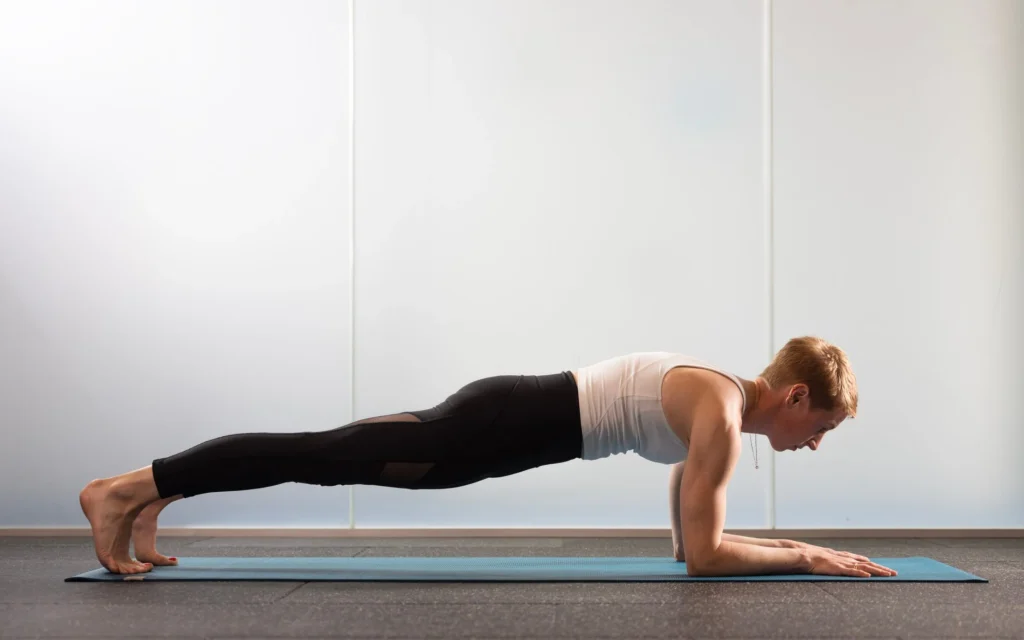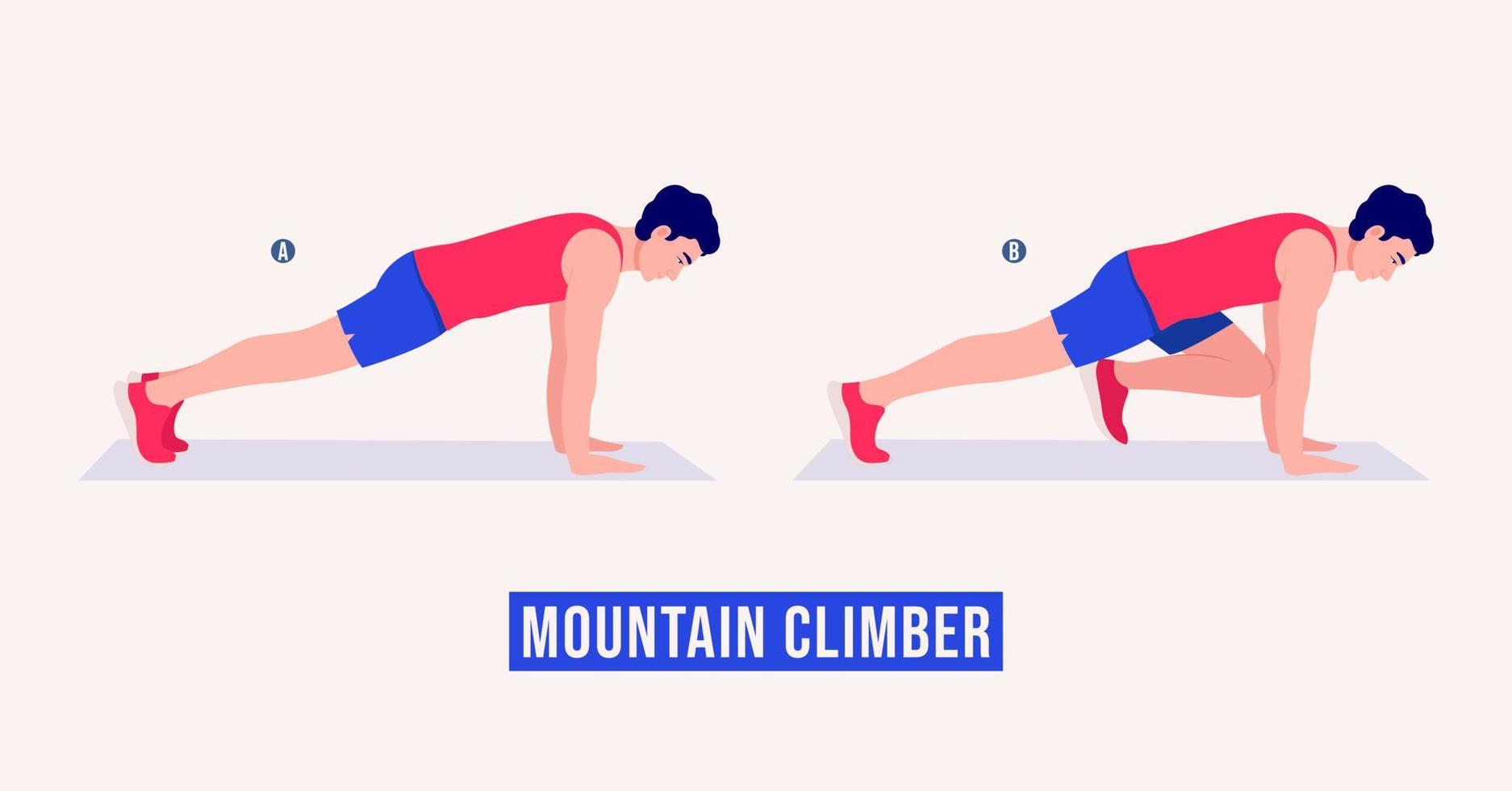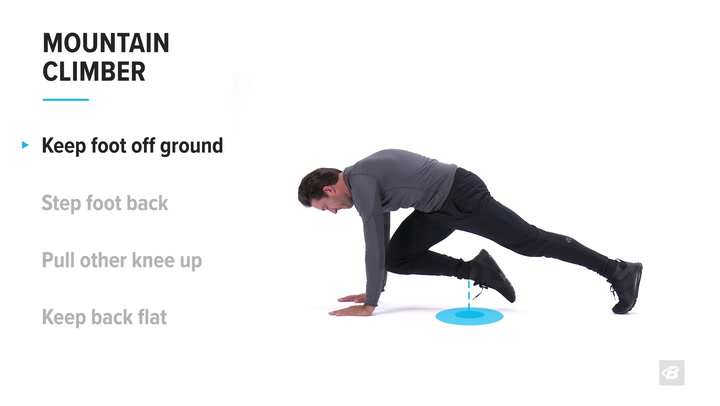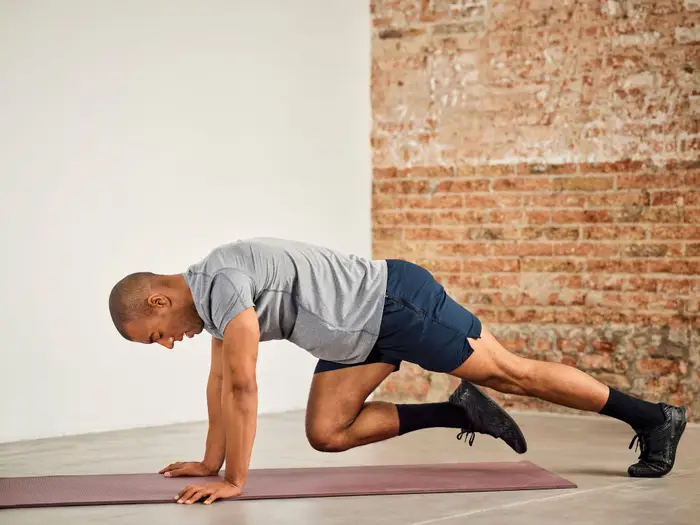For most, mountain climbing exercise is difficult; but, if your mountain is the floor, then things change. That idea drives the mountain climbing activity. Starting from a plank position, alternately bring one knee to your chest then kick back out, accelerating each time until you are “running” against the floor.
Although the climb looks easy, the mountain climbing workout increases your heart rate and works your whole body. This exercise fits perfectly for your morning workout at home or the gym, in a hotel room while on travel, or even fit a few in the break room at work. For beginners, the basic motion is excellent; but, variations will help more experienced athletes take things up a level.
Exercise on Mountain Climbing: Advantages
Excellent for developing core strength, aerobic endurance, and agility is the mountain climbing exercise. With just one motion, this exercise almost resembles a total-body workout as you target various muscle groups.
Mountain climbing raises your heart rate as a high-intensity workout, so boosting cardiovascular condition and helping to burn calories.
Your lower back muscles, oblues, and abs help to stabilise your body, hence improving your core strength overall.
Shoulders, arms, and chest help to stabilise your upper body, so building muscle endurance and strength.
Lower Body: A strong leg workout is produced by actively engaged quads, hamstrings, and glues.
Including the mountain climbing exercise in your program will enable you to get a balanced and effective workout, so encouraging general fitness and well-being.
Detailed Directions for the Mountain Climbing Exercise
Try the traditional variant of the mountain climbing workout when you’re first starting:
- Get into a plank position by equally spreading your weight from your hands to your toes.
- Check your form: Head in alignment, back flat, abs engaged, hands roughly shoulder-width apart.
- Bring your right knee as far as you can straight into your chest.
- Pull one knee out and bring the other knee in. Switch legs.
- Maintaining your hips down Run your knees in and out as fast as you can, covering great distances. With each leg change, alternately inhale and exhale.
- Remember breathing while doing the mountain climbing activity. Good breathing helps you to keep rhythm and guarantees enough oxygen supply to your muscles.

Typical Errors in Mountaineering Exercise
A few typical mistakes might reduce the effectiveness or possibly endanger the mountain climbing activity.
- One typical beginning error is bouncing on your toes while you execute the movement. Although the bouncing feels like a tougher workout, it actually calls for less core muscle involvement. Like CrossFit shoes, correct footwear can help you keep good form.
- Another form mistake, particularly as you speed up, is not fully completing the movement by allowing your toes touch the floor as you draw your knees into your chest. Should your toes not touch the ground, you run the danger of not fully benefiting from the mountain climbing workout.
- If you’re not used to the mountain climbing exercise, it’s simple to allow your weight shift back so your bottom is up in a down-dog action. Maintaining your weight in balance, raise your shoulders above your wrists.
Correct way to do mountain climbing exercise
Variations and corrections for the Mountain Climbing Exercise
These variations of the mountain climbing exercise will help you to customise the exercise for your degree of skill.
Beginner level mountain climbers should begin with a low-impact variation
- Maintaining an elevated right foot, bring your right knee to your chest from a plank position.
- With your right foot back to the plank position, let your toes contact the ground.
- Revers the action quickly, keeping your left foot off the ground and bringing your left knee to your chest.
- To repeat step 2, return your left foot to the plank position, toes touching the ground, then instantly raise your right foot.
- Alternately sides quickly for one minute or the desired number of repetitions.
- Try modified mountain climbers on a step if you want some weight off your hands, shoulders, and arms. On this variant, step or block to raise your upper body. This can be beneficial whether you are still working on building your upper-body strength or are returning to an exercise following an injury.
Once you have perfect the fundamentals, challenge yourself with a more difficult form of the mountain climbing workout.
- Foot-Switch Mountain Climbers: More of a foot switch than a run this variation is. It might raise your heart rate and have more effect.
- Starting from a plank posture,
- Bring your right knee in, then tap the floor with your big toe.
- Jump-switch your feet: simultaneously take your left foot forward and your right foot back.
- Continue for the intended time span or number of repetitions.
- Mountain Climbers Sliding Mountains: Try using a towel or gliding disc if you have a wooden surface and want to vary the fundamental move.
- After laying your disc or towel on the floor, then start a plank by stepping on it.
- Using your other non-sliding leg and upper body to stabilise yourself, slowly start to finish a basic rep.
- You will feel this variation working your quads more than in simple mountain climbers as you speed up the exercise.
- Mounting Mountains: Standing Mountains Climbers Perform the mountain climbing workout standing to include some extra cardio.
- Raise your knee to hip level first; then, drop to the floor in a plank stance.
- Execute the basic technique, bringing your knee to your chest, then back out once again.
- Try running for a count of ten to increase your heart rate then flip to the other side.
- Like with a plyo floor lunge, you may also consider slowing mountain climbers to maximise the stretch.

Safety and Considerations for Mountain Climbing Exercise
The mountain climbing exercise mostly depends on your capacity to adopt and maintain a correct plank posture. This entails making sure that:
- From your shoulders, your arms and hands point directly down.
- Your back is straight and level rather than bent or arched.
- Your hips are low; your butt shouldn’t be elevated in the air.
- Review the correct planking shape to guarantee the movement is safe and effective. Doing a plank with bad form increases your chance of injury and will significantly lower the advantages of including mountain climbers into your exercise program.
- If you have instabilities in your pelvis or shoulders, you should avoid mountain climbing. Although this exercise is an excellent workout for your knees, you should consult your doctor or physical therapist before including mountain climbing into your regimen if you have had surgery or need to have surgery (such as to replace a joint afflicted by arthritis or repair a sports-related injury).
- If you recently underwent any kind of abdominal surgery or have lately been pregnant, you can develop diastasis recti, a disorder in which the muscles of your abdomen separate. You should avoid mountain climbers and any core exercise until this problem totally cures.
Exercise for Mountain Climbing: Including Into Your Routine
Including mountain climbing into your daily training regimen will have major results. The following will help you maximise this exercise:
Always start your muscles and joints for the exercise with a suitable warm-up. This could call for dynamic stretches and light aerobic work.
Combine with other workouts: For a complete workout, include mountain climbers into a circuit regimen among other bodyweight exercises such burpees, push-ups, and squats.
Start with smaller intervals and progressively extend the length and intensity as your fitness advances.
Aim to include at least two to three times a week the mountain climbing exercise in your program for best results.
Last Views on Mountain Climbing Exercise
Any fitness program may accommodate the flexible and efficient mountain climbing activity. This activity has several advantages for your cardiovascular health, core strength, and general fitness regardless of your degree of experience with exercise. You can maximise the efficacy of this strong workout by paying attention to correct form, avoiding common faults, and investigating several adaptations and advanced approaches.
Recall that receiving the advantages of the mountain climbing activity mostly depends on consistency and correct technique. So get ready, choose a nice place, and begin climbing your way to greater health and fitness right now! Lace your shoes.


